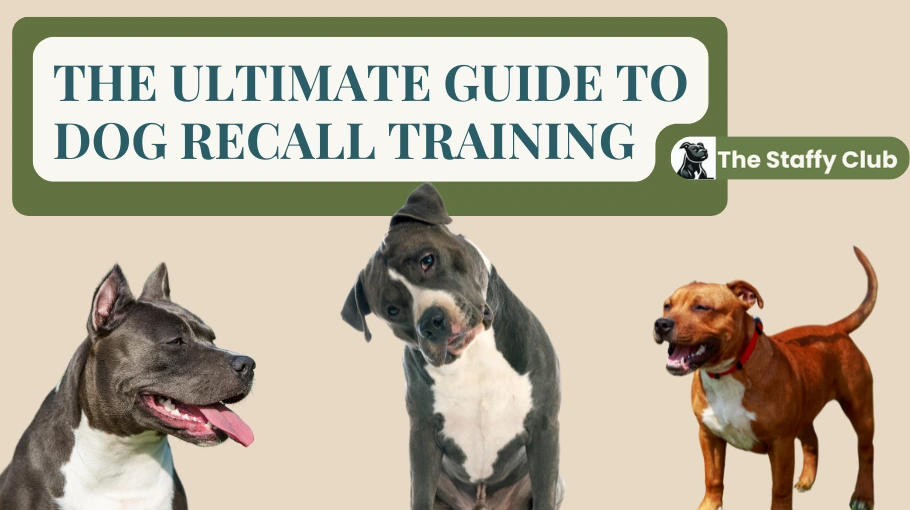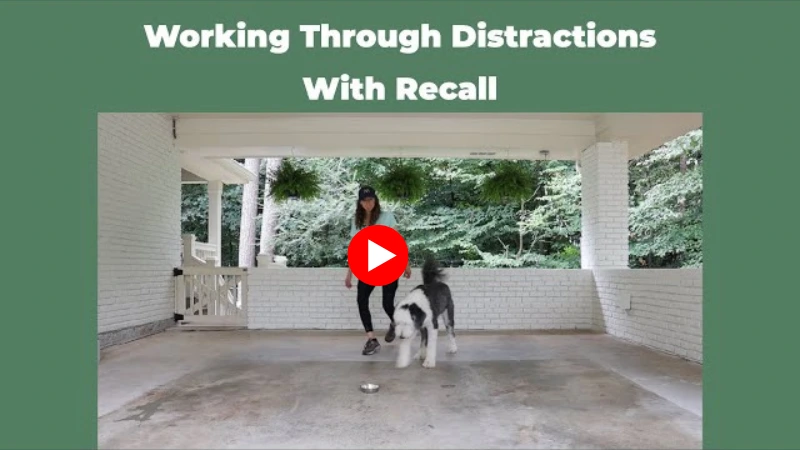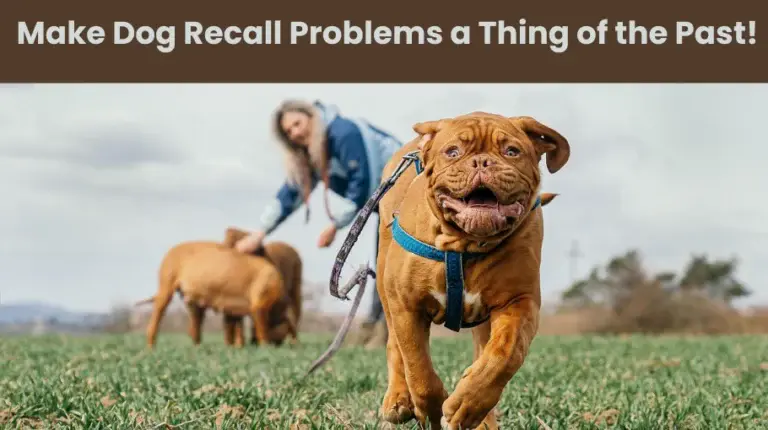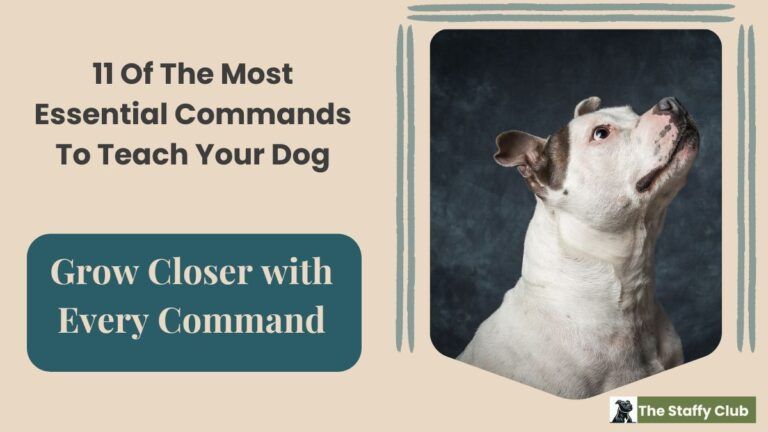The Ultimate Guide to Dog Recall Training

If you’ve ever felt frustrated because your dog won’t come back when called—whether at the park, on a walk, or in your own backyard—you’re not alone. The challenge of dog recall training is one that many dog owners face, especially when it feels like your dog is tuning you out, or only listens when it suits them.
The good news? Recall training is a common challenge, but it’s one that can absolutely be overcome with the right techniques and a healthy dose of patience. With consistency and understanding, your dog will learn that coming when called is not only possible—it’s something they’ll do happily.
At the heart of successful recall training is a strong bond built on trust, clear communication, and positive reinforcement. So take a deep breath, and know that with a little time and effort, your dog’s recall can improve.
Table of Contents
Why Recall Is Important

Teaching your dog a solid recall cue isn’t just about obedience—it’s about safety, freedom, and strengthening your bond.
A reliable recall can be life-saving. One day, I was out on a country stroll with my two dogs when we found ourselves on the opposite side of a riverbank we don’t usually walk along. One of my dogs recognized the river, probably remembering it as shallow, and jumped down from the ledge. It wasn’t a steep drop, but when he tried to jump back up, he couldn’t. His paws barely reached the edge; he started to panic.
The easiest way out was across the river into open fields. Jumping into a shallow riverbed wasn’t on my to-do list, so I called him “up”.
I knelt down, arms outstretched, and said calmly, “Come on, boy.” He hesitated, then trusted me. With one big push, he made the jump. I caught the handle of his harness and pulled him up. As soon as his paws hit solid ground, I was covered in grateful, slobbery kisses.
That moment was a reminder: recall is more than a command—it’s trust. It’s knowing your dog will listen when it matters most. Whether it’s avoiding danger, navigating walks, or passing other dogs, a strong recall gives your pup the confidence to look to you for guidance.
Common Mistakes That Sabotage Recall

For recall training to be successful, it’s crucial to avoid mistakes that can make it less effective. Many owners make inadvertent errors early on, which often lead to needing corrective training later when recall doesn’t stick. Here are some common mistakes to watch out for:
1. Using the Recall Cue Inconsistently
Positive reinforcement is key to making obedience training work. When you use the recall cue consistently, your dog learns that “come” means something good is coming their way. But if you only use recall to end playtime or put them in the crate, they’ll start associating it with something they don’t enjoy. Why would they want to come back?
It’s like with commands such as “sit” or “wait”—they only work when your dog knows a reward is involved, even if that reward is just praise and petting. Keep recall positive, and your dog will be eager to come when called.
2. Scolding Your Dog When They Return
“Scolding” doesn’t just mean physical punishment (like flicking your dog’s nose—a quick, light motion, but still unpleasant for them, as their nose is highly sensitive ). It also includes your tone of voice.
Greeting your dog with a stern tone can confuse them. Studies on dog memory show that dogs have a short-term memory of about two minutes, but they can recall specific past events (episodic memory). So if they’re met with a stern tone or punishment after returning, they may start associating recall with something negative.
I learned this firsthand. When I used to shout in a stern voice, both of my dogs would get stubborn. But when I lowered myself to their eye level, shook the treat pouch, and used a playful tone, they came running back excitedly. Tone and body language matter!
3. Relying on Ineffective Rewards
The reward you use is a huge part of successful recall training. In highly distracting environments—like dog socialising classes or busy parks—use high-value treats, like chicken (not just chicken-flavored treats). At home or in the garden, low-value treats work fine for reinforcing recall with repetition.
Funny story: One day, we met up with the owners of our dogs’ mum and sister, and the dogs were running around like crazy. “Come” wasn’t registering. But when I shouted the word “Bonio” (not the healthiest treat, but they love it), our pair stopped in their tracks. A little goes a long way, and in that moment, it was the perfect motivator. And a laugh for those there to witness a treat name being used for recall!
4. Overusing Your Dog’s Name Without Pairing It with Action
If you call your dog’s name repeatedly without following up with a clear action or command, it can lose its meaning. Over time, your dog might start ignoring it, because they’ll learn that their name doesn’t always signal something important.
I noticed this during puppy training class. With over 10 dogs, each owner was calling their dog’s name, but the dogs instinctively knew they weren’t being called. They’d wait patiently until the trainer called their name, and that’s when they’d respond—because they knew it meant they were about to do something and get rewarded.
This experience made me realize that training classes aren’t just for dogs—they’re also for us as owners to learn how to communicate effectively with our dogs.
5. Expecting Perfect Recall Too Soon
It’s easy to get excited about teaching recall and want your dog to come when called in any situation. But expecting perfection too soon can set you both up for disappointment. Recall training is much more effective when it’s built on a solid foundation of basic commands like sit and wait.
Start by practicing in a secure area, like your garden or another enclosed space. Have your dog sit, wait, and then call them to come. Once they’re responding consistently in these low-distraction environments, gradually add more challenges—such as bigger areas or distractions. This step-by-step approach sets them up for success and builds their confidence.
6. Ending on a Negative Note or Training for Too Long
There will be times when your dog doesn’t come when called, and that’s okay. But don’t end the session there—instead, give them a command they can do (like “paw” for a doggy handshake) and end the session on a positive note. This leaves your dog excited when next training session comes around.
Also, keep your sessions short—about 5 to 10 minutes is ideal. After that, dogs can get bored or lose focus, making it harder to keep up the same level of engagement.
Setting the Foundation for Success

Recall training takes time, consistency, and a solid strategy. The cue you choose, the rewards you use, and reinforcing recall with positive outcomes every time your dog returns all play a crucial role in success.
Choosing a Recall Cue
Whether you call it a cue or a command, the rule is simple: keep it short and clear. Victoria Stilwell (from It’s Me or the Dog) explains that repeating “sit, sit, sit” actually teaches a delayed response, whereas a single, firm “sit” is much more effective.
For an even more reliable recall, consider adding hand signals. A study in Psychology Today found that dogs responded with 99% accuracy to hand gestures, compared to 82% accuracy with verbal cues alone.
If you want to give your dog more off-leash freedom, start with hand signals up close, then combine them with verbal cues. As your dog gets the hang of it, you can phase out hand gestures and rely more on verbal commands. For long-distance recall, especially in open fields, you might even introduce a whistle for added consistency.
Picking the Right Rewards

Not all dogs are motivated by the same thing, so finding the right reward is key. Some dogs are food-driven, so high-value treats like real chicken or cheese are great incentives. Others respond better to play—whether it’s a quick game of tug or chasing their favorite squeaky toy.
Our two are food-motivated—any treat will do now—but in training classes, I saw other dogs who were much more engaged when rewarded with their favorite toy. Some dogs even thrive on enthusiastic praise, especially when a treat isn’t practical.
The key is to experiment and find what excites your dog most. What works at home may not be enough in a distracting environment, so be ready to adjust your rewards depending on the situation.
Creating a Positive Association

For recall training to stick, your dog needs to associate coming back to you with something positive. Treats work well in controlled settings, but in real-life situations—like when recalling them away from cattle or an approaching horse—you won’t have time to grab a treat.
In these moments, your tone, praise, and even physical touch (like a reassuring pat when clipping on the leash) become the reward. An enthusiastic “good boy!” can be just as effective as a treat when you consistently reinforce it.
Clicker training is another option some owners use, but it requires perfect timing to mark the behavior exactly when it happens—a bit tricky in high-distraction situations. Whether you’re using treats, praise, or a well-timed “attaboy,” the goal is always the same: make sure your dog views recall as leading to something rewarding.
Step-by-Step Recall Training
Before diving into recall training, it’s important that your dog already knows basic commands like Sit and Stay (or Wait). These foundational commands make recall training smoother and more effective.
1. Start Indoors or in a Controlled Space
The fewer distractions, the easier it is for your dog to focus solely on you. If you have more than one dog, train them individually. We have two brothers, and training them together was a distraction—they’d just focus on each other!
Start in a controlled space, like your kitchen with the door closed. Begin with the basics: Sit and Wait (or Stay). Then, slowly walk away from your dog while maintaining eye contact and using the Wait hand gesture. When you’re ready, say “Come.”
Your tone matters here—higher-pitched and excited tones often get a faster response.
When your dog reaches you, immediately mark the behavior with whatever reward you’re using, whether it’s a high-value treat or praise. In the beginning, it’s all about the recall—don’t worry if they don’t sit immediately when they get to you. Sitting can come later, once they’ve mastered the “come” command.
Tip: If your dog doesn’t come when called, go back to a command they know well—Sit, Lay Down, Shake Paw, or Follow Your Hand. Mix in familiar commands with recall training to keep things varied. Every now and then, throw in Sit, Wait, and Come for added challenge, but remember—if your dog waits but doesn’t sit, that’s okay! As long as they’re focused on you, you can work up to the sit.
Real-world note: When you’re out on off-leash walks, your dog probably won’t be sitting anyway, so don’t stress about perfect form.
2. Practicing on a Long Leash Outdoors
It’s best to keep your dog leashed until you’re confident in their recall ability. A long leash gives them the freedom to roam while still keeping them safely secured.
These long leashes come in various lengths, from 10 to 100 feet. They aren’t the retractable types – don’t confuse the two. Retractables are dangerous, especially for dogs with unreliable recall. For starting, a 15-foot leash is manageable for both you and your dog. It gives them plenty of space to move, but not enough that they can build up too much speed—so you can still reel them in if the recall command doesn’t register. Go shorter if you have a big, strong, muscular dog that you’d struggle to control on a long line.
Once you’re comfortable with the 15-foot leash, you can try a 30-foot leash for bigger, open spaces like beaches or fields. In areas with trees and shrubs, though, a shorter leash is more practical since longer ones can easily get tangled.
When starting outdoor training with distractions, the 15-foot line is a good option. It gives your dog plenty of room to roam, but focus on getting them in the habit of returning before they reach the end of the line.
Key tip: Recall training works best when your dog chooses to return to you voluntarily—not because you’re tugging on the leash. The command should be what gets them to come, not the tension on the line. Eventually, when you move to off-leash walks, you’ll rely solely on the cues, not the leash.
As your dog gets more reliable, gradually increase the distractions you introduce—this helps build a stronger recall.
3. Adding Distractions & Real-Life Practice
The best way to introduce distractions is in a controlled space, like your garden, where you have full control over the environment. This prevents any surprises—like a cyclist zooming by while your dog’s on a long line!
Start with low-level distractions:
- Mild Noise Distractions: Play sounds like distant dogs barking, birds chirping, or traffic noise at a low volume. You can easily find these sounds on YouTube.
- Scent Distractions: Scatter kibble or treats in the grass and have your dog walk past on a leash, using a treat to lure them past the distraction.
Once your dog gets the hang of it, move to moderate distractions in places like quiet trails or parks:
- People Walking By: Start with strangers at a distance and gradually decrease the space as your dog gets better at ignoring them.
- Other Dogs at a Distance: Start with a calm dog nearby and work up to more distractions, like dogs playing in sight. We found it helpful to walk on popular dog-walking routes. It gave us the chance to connect with other dog owners who would help with training. The routine: no jumping, sit when told, then treat! (and no snapping either – take it “nice”).
- Mild Temptations: Place a toy or low-value treat on the ground and have your dog walk past it without reacting. Reward them when they ignore it.
Check out the video below: It’s of a training Session with Christie & Otis demonstrating using a high-value distraction—chicken! At first, the chicken is inside a crate, out of reach. Then, the crate is removed, but the temptation is still within view, and Otis is recalled away from it until given the okay to retrieve it.
This is an example of a high-level distraction, and here are some others you can work up to:
- Fast-Moving Objects: Walk on trails where cyclists and joggers frequent, but not on a long line because you need control. We find the Ezydog Vario 6 adjustable dog lead perfect for high level distraction zones because it has the traffic handle, keeping the dog right by your side.
- Wildlife & Farm Animals: Train near secured livestock areas, duck ponds, or places where animals like rabbits and squirrels are often spotted.
- Favorite Playmates: Let your dog socialize first, then practice recall during playtime.
4. Off-Leash Training in Safe Environments
Once you’re confident that your dog has a strong recall, don’t stop reinforcing it. It’s important to keep practicing and improving.
The biggest challenge is wide open spaces, where young, energetic dogs often get the urge to zoom around and explore every corner of the field or park. While this is fine in an enclosed space, you’ll need to be extra cautious in areas with dips or where other people or animals might be out of sight. You can’t let your dog wander too far, especially when there are potential distractions.
Tip: When you recall them, make sure they don’t associate the recall with their freedom being taken away immediately (e.g., being put back on the leash). You want them to feel like recall is a positive thing, not a signal that their fun is over.
Start in safe, low-traffic areas. Let your dog off the lead and practice frequent recalls, rewarding them each time. Occasionally, put them back on the leash during the walk to normalize it. You can switch between on-leash and off-leash training, using recall, praise, and walking by your side.
Introduce another cue word like “go” to let them know when they’re free to move ahead of you. This helps create a routine and a clear distinction between “come” (recall) and when it’s okay to explore.
Every now and then, surprise them with a jackpot reward—something really special, like a piece of real chicken—every third successful recall. This adds excitement and motivation for your dog to keep up the good work!
Troubleshooting & What to Do If Recall Fails
It’s bound to happen, especially with stubborn breeds. Take the traits of a Staffordshire Bull Terrier as an example—they’re known for their independent streak. Even with years of consistent recall training, they might still test their limits from time to time.
Managing Disobedience
When your dog ignores the recall, the immediate solution is to leash them. A front-clip harness is a great tool for this—when they try to pull, their head tilts sideways, which breaks their focus on distractions. A few minutes of controlled walking on the leash will help reset their behavior before you give them off-leash freedom again.
Fatigue & Focus
If you’ve been out on a long or strenuous walk, recall might not work as well. The more tired your dog is, the less focused they will be. If they’re overly fatigued, it’s safer to leash them to prevent any further disobedience or potential hazards.
If Your Dog Runs Away
Never chase after them. Your dog will outrun you, and this could lead them into dangerous situations, like traffic or into fields with cattle. Instead, use the “home” trick: turn your back and say “bye” or “home” in an upbeat, excited tone, then start walking away slowly.
Exception: If they’re chasing something, like a cyclist, or another animal, you’ll need to escalate the command. Keep repeating the recall cue (“come, come, come”) in an increasingly high-pitched tone to grab their attention.
Emergency Commands
If excitement takes over and recall fails, try using a command your dog associates with discipline. For instance, one of our dogs once bolted toward another couple with a dog—while “come” didn’t work, saying “down” in a stern voice did the trick.
Whatever command you use at home to get their attention when they’re misbehaving, have that be your emergency command. The one you use only when you need them to know that you are not playing!
If Your Dog Anticipates the End of Fun
Some dogs resist recall because they know it means the end of playtime. To prevent this, you can:
- Occasionally call them, reward them, and let them continue playing.
- On shorter walks, use mental stimulation instead of relying solely on exercise. Have them walk off-leash by your side, recall them intermittently, and include treat searches (toss a treat in the grass and send the dog to find it).
By varying rewards and consistently reinforcing recall, your dog should remain responsive even in high-distraction environments. But remember, don’t trust it completely. When they’re off-lead, keep your head on a swivel for potential distractions and recall your dog before they spot anything that could pull their attention away from you before you have a chance to respond.
Conclusion: Progress Over Perfection
Recall training isn’t about perfection—it’s about progress. Some days, your dog will come running back instantly, tail wagging. Other days, they’ll get distracted, test boundaries, or seem to forget everything they’ve learned. That’s completely normal.
The key is consistency, patience, and celebrating small wins along the way. Every successful recall, no matter how minor, strengthens their understanding and trust in you. Setbacks will happen, but they’re just part of the learning process.
With time, persistence, and positive reinforcement, a reliable recall is absolutely achievable. Keep practicing, keep reinforcing, and most importantly—keep enjoying the journey with your dog. After all, recall isn’t just about obedience; it’s about building a relationship where your dog chooses to come back to you every time it matters.






